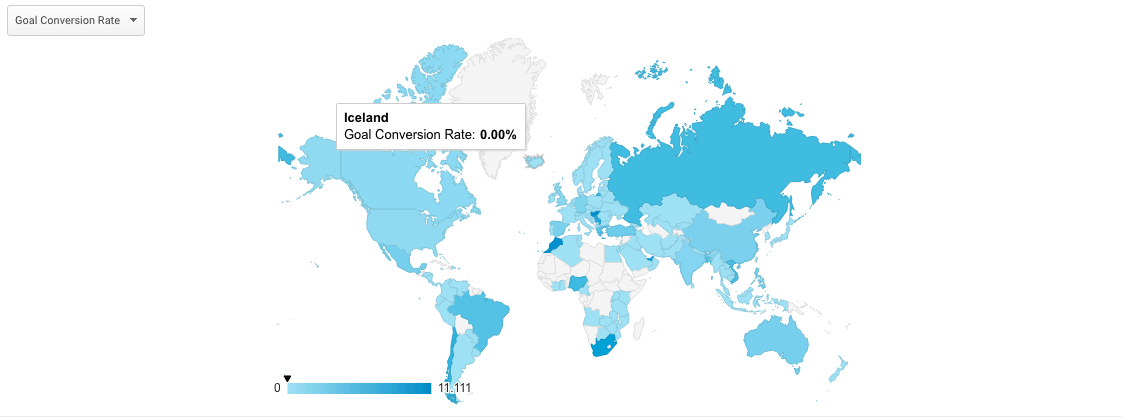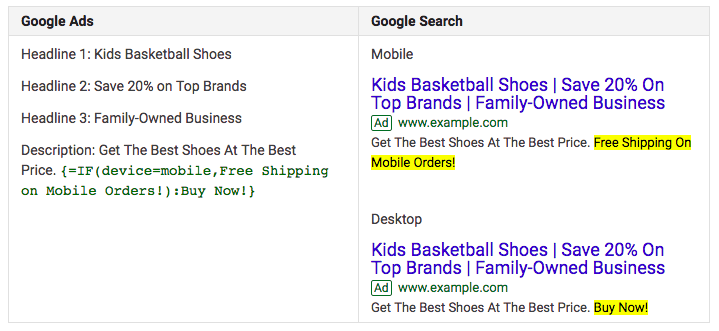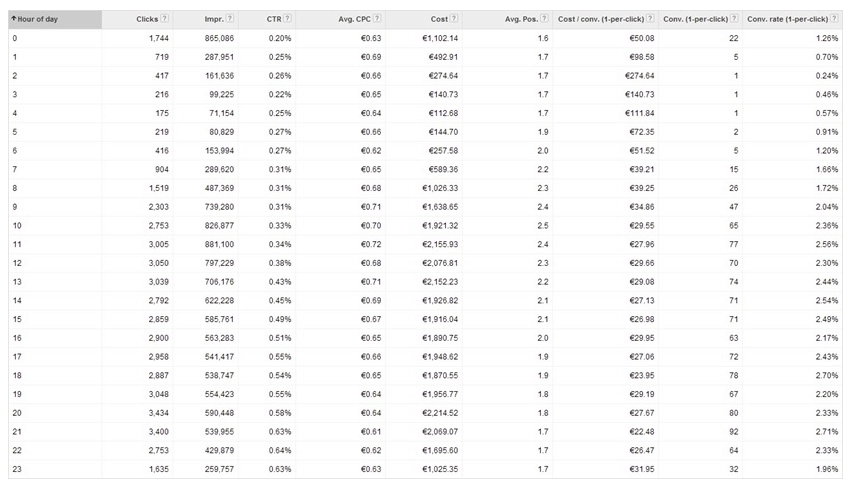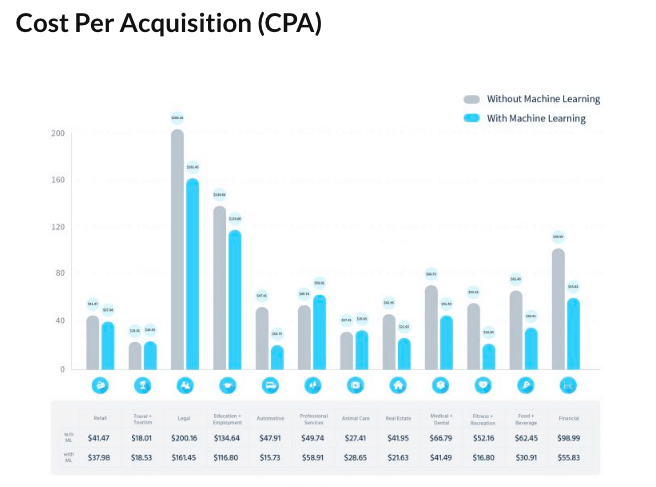If you ask Google how to lower your cost-per-acquisition (CPA) inside Google Ads you won’t get a straight answer no one has.
You may read through a series of articles on how to do Target CPA bidding, but that still won’t arm you with hands-on, proven strategies to lower your CPA.
Target CPA bidding will help advertisers who use Google Ads to get as many conversions as they can for their set budget, but it won’t necessarily help them save money.
To actually lower or reduce the cost it takes to acquire a new customer in Google Ads, PPC marketers need experience.
In lieu of experience, you’ll need to read on if you’re hoping to spend less on PPC customer acquisition next month.
So let’s get into it.
Understanding CPA
Google’s definition of average CPA is:
“The price advertisers pay for every new customer they acquire, which is calculated by dividing the total cost of conversions by the number of conversions. Google determines the CPA based on your quality score.”
Understanding average CPA is pretty straightforward. But again when Target CPA bidding comes into the picture things get complicated. We’ll address that in more detail in number 5 below. For now, let’s just focus on CPA as a metric and as an average.
CPA indicates the ROI of a campaign.
Lowering this metric means more return for your PPC investment.
It’s that simple, and indeed in every advertiser’s interest to get more leads for less investment.
Yet average CPAs vary drastically per industry.
For example, according to our own Google Ads (formerly AdWords) benchmark study at Acquisio (the company I work for), the average CPA for the Travel and Tourism industry is $18.01, while the average CPA for legal is $200.16.
The value of a conversion is much different within each – consider the lifetime value of a new client for a lawyer versus selling a one-time gym membership.
There is a lot of variation between industries, so keep in mind the value of you or your client’s conversion as you attempt reducing CPA.
Similarly, benchmark your current CPA with your industry to see how far off you are.
For example, if you find that you’re pretty much at the average, you may have already done all you can to lower your CPA!
Or have you?
Let’s find out.
How to Lower Your CPA
Spoiler alert: Lowering your CPA is going to mean being disciplined with your ad management or taking a risk with a new strategy or technology.
It won’t be a walk in the park, but someone has to do it!
You brave soul have made it this far and may just be the campaign manager who can lower the cost of PPC for your agency, client, brand, or business.
Here are five techniques to make you the next PPC hero.
1. Location, Location, Location
This ol’ adage applies to PPC too!
If you set your targeting too broad inside Google Ads, it’s possible you’re serving them to poorly-converting regions.
These are considered locations that have generated little to zero conversions over the last few months.
To see if you’re setting your Google Ads targeting too broad and spending too much money as a result, head to Google Analytics.
Go to Audience > Geo > Location.
Once you’re there, you’ll see the Sessions dropdown menu in the top left corner.
From the dropdown, select Conversion Rate under Goal to see which regions are driving the most conversions and which aren’t:

When PPC marketers get granular on their targeting, evening drilling down to which cities are most profitable, they can save a lot of money.
Unless you’re getting very little traffic overall (which indicates you have bigger PPC problems), this technique is a fast and efficient method to reduce your CPA and boost your campaign’s ROI.
2. Boost Quality Score with Better Ad Structure
Google determines CPA based on an advertiser’s quality score (but understanding quality score is where it can get complex).
So it would only make sense that improving your score will help reduce your CPA, right?
Right.
There is such a strong correlation between the improvement of quality score and reducing CPA that WordStream says optimizing for one is the same as the other:

Anyone who’s worked in PPC for a number of years has likely already spent a lot of time trying to improve quality score with factors like relevancy.
However, in the never-ending quest to improve quality score, campaign managers can sometimes ignore the importance of a clean ad structure.
Make sure that each ad group has a set of extremely relevant keywords. This helps boost your CTR and your subsequent quality score.
Using an ad structure known as SKAGs (single-keyword-ad-groups), where advertisers focus on only one keyword per ad group, Audi cut their CPA in half.
User beware though, only create SKAGs for your highest performing keywords, which can be determined inside Google Analytics.
For additional quality score boosters, PPC Hero recommends auditing ad structure and doing the following:
- Pause keywords that have a CTR lower than 1.5 percent or with almost no conversions.
- Make highly relevant landing pages for each ad group.
3. Use Google Ads ‘If’ Functions
The path to success in any marketing campaign is often:
- Test.
- Optimize.
- Rinse.
- Repeat.
Ongoing optimization is part and parcel in PPC.
Luckily, search engine marketers using Google Ads benefit from the built-in “IF functions.”
IF Functions allow marketers to set up rules for their ads to ensure they only show in desired conditions.
Consider rules like: Only show my mobile ad IF the user is using a mobile device, like shown in the examples from Google below.

Free Google Ads report finds improvements in 60 seconds
Based on actual data from your own campaigns.

Enforcing rules inside campaigns effectively does two beneficial things for paid search marketers:
- It ensures ads are showing under the most relevant conditions to the user, which means they’re most likely to click. Improving click-through rate can improve quality score, which can reduce your CPA!
- By making ads more relevant and targeted to the user, you avoid paying for irrelevant clicks – again reducing costs.
To begin using IF Functions in Google Ads first ask yourself what part of your ad could be optimized.
Ad copy? Audience? Pricing?
Then get to work experimenting and iterating on your results.
Ongoing optimization is a guaranteed technique to reduce costs in paid search advertising.
4. Schedule Cheaper Advertising
Ad scheduling is possible inside Google Ads, allowing advertisers to customize their ads by determining when it’s more important for ads to appear in search results.
This could be related to your local business hours, for example.
However, campaign managers have also mined average CPA data throughout the day to make sure they’re bidding down when average CPA costs skyrocket:

Building off the example data above, this advertiser suggested how they might use this data to reduce their SEM costs:
“avg CPA of the first 8 hours of the day is €39.93 which is 42 percent more than the avg CPA for the remainder of the day; in this case I might want to create a customized ad schedule, like the one on the right, and start by bidding 30 percent lower for the clicks during the first 8 hours of the day, let the results role in and go from there.”
However user beware, this may result in a loss of impressions, clicks, and conversions.
You can still create an effective ad schedule without losing traffic by testing bid modifiers before reducing bids accordingly.
For example:
“say a strong CPA within your account is $45. The 9am hour is producing a $55 CPA but with good volume. In a situation like this, you should test a bid modifier of around -10 percent to see how performance adjusts in that time frame. If that doesn’t do the trick, test -20 percent and so on. The same goes for days of the week. A lot of times, overall performance fluctuates on the weekends. If that’s the case in your account, try testing different levels of bid modifiers for those days prior to cutting it completely.”
Campaign managers walk a fine line when using ad scheduling to reduce CPA costs. Make sure you monitor your accounts closely as you test different bid modifiers alongside peaks and valleys in average CPA costs throughout the day and week.
5. Try Machine Learning
Machine learning and AI advancements in search advertising have generated a lot of buzz among search marketers.
Google Ads has built-in machine learning to help advertisers improve conversions and optimize ad performance.
Let’s circle back to Target CPA bidding inside Google Ads.
Target CPA bidding is also referred to as Smart Bidding inside Google Ads and it refers to an automatic bidding strategy within campaigns that’s designed to get your ads more conversions for the target CPA that you set (the maximum you’re willing to spend for a conversion).
Smart Bidding is built on machine learning technology.
From this perspective, advertisers could turn on Smart Bidding and simply set a lower target CPA than before to see if they can still achieve the same results at a lower price with the help of machine learning.
Smart Bidding adjust bids using signals including:
- Device-type.
- Browser-type.
- Time.
- Location.
- Remarketing list.
Agencies that manage Google Ads at scale may rely on third-party machine learning systems to reduce CPAs as well.
Here is a breakdown of how third-party machine learning impacted CPA by industry inside Google Ads:

The data above suggests that not all industries are created equally inside the world of PPC; therefore, the impact which machine learning can have on Google Ads campaigns depends on the industry.
What works for one industry won’t work for another.
In many cases, machine learning reduces CPAs dramatically, while in others CPA actually increases.
If the main goal of a campaign is to reduce CPA, machine learning can help in many cases, but it depends on the industry.
Marketers should keep the whole performance picture in perspective.
If an increase in CPA results in a dramatic increase in conversions, you may want to keep your bid where it is.
Getting More for Less
Reducing the cost of acquiring leads from Google Ads can be easy if you’re open-minded and disciplined.
Start with easy quick-win techniques like improving your ad targeting.
Then, move on to more rigorous tasks like cleaning up ad structure to improve quality score, testing IF Functions, and creating an ad schedule.
Beyond these techniques, campaign managers need to take a leap of faith and try an account or two on machine learning.
Advancements in data science let campaign managers relax while potentially reducing CPAs.
However, machine learning has varying levels of impact on reducing CPA depending on the industry, so monitor closely.
Try these five techniques in order, one after the other, and don’t necessarily mix them all together.
If you planned to pull out the big guns and put all of these techniques into play at once, you may sabotage your own results.
For example, if your testing IF Functions alongside bid modifiers for ad scheduling, while asking a machine learning system to read its own bid modifier signals to make bid decisions – you’re creating a meaningless mess.
Trim the fat off your ads by getting rid of low performing regions first.
Then, take it step by step using the rest of the techniques described above.
